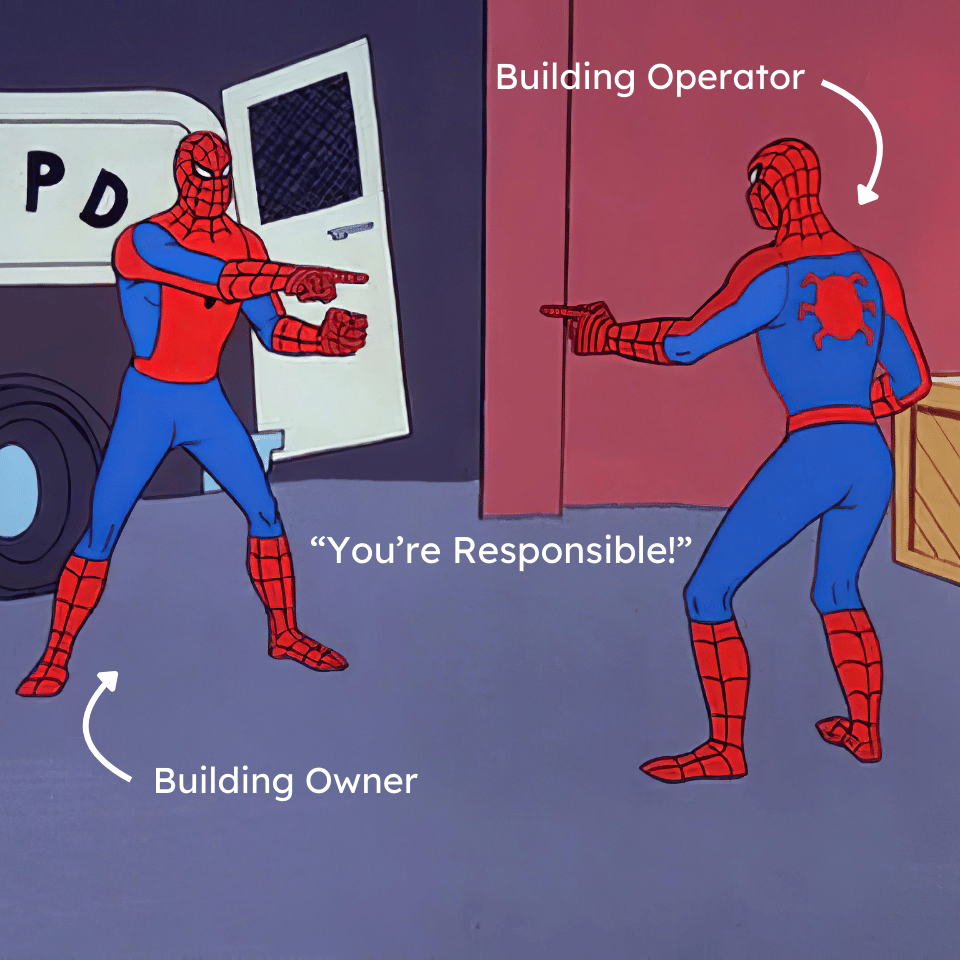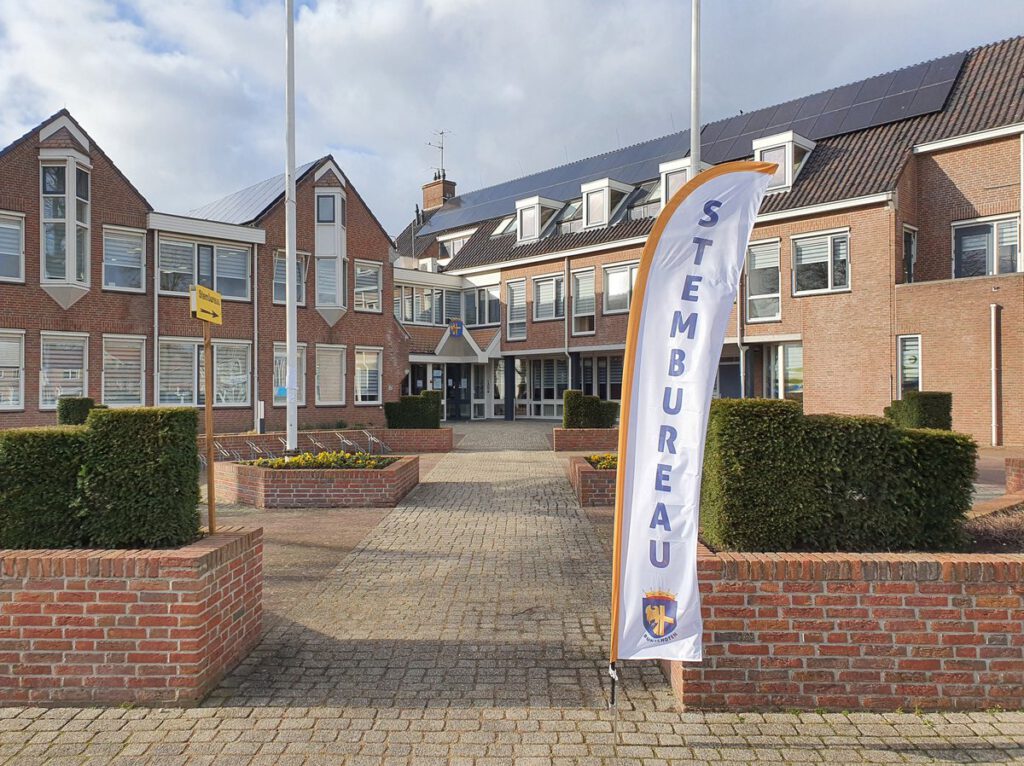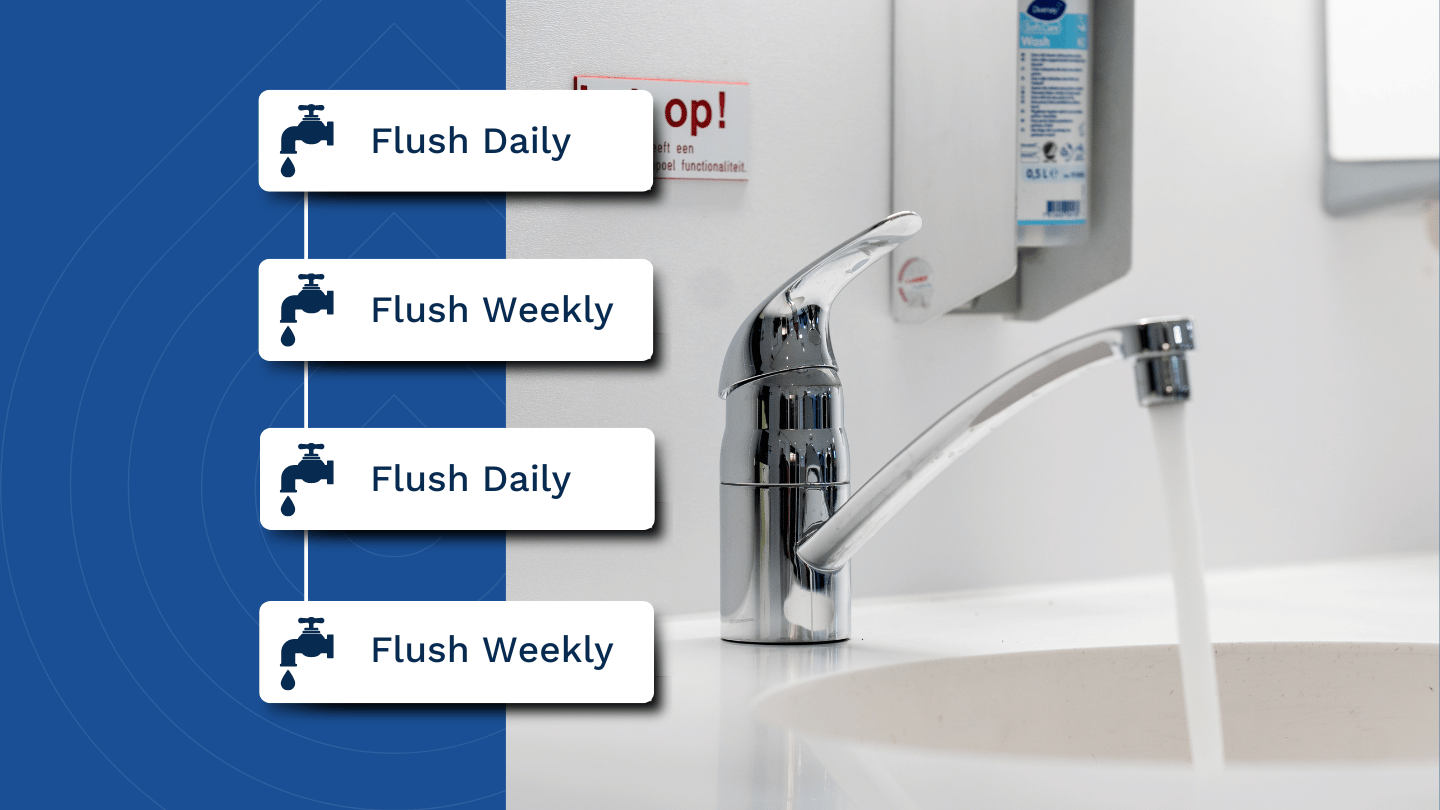Who is the Responsible Person for Legionella Control in Shared Estates and What is your Legal obligation?
“You cannot escape the responsibility of tomorrow by evading it today.”
Abraham Lincoln
Managing the risk of Legionella in shared premises and residential accommodation is a legal obligation for both Building Owners (Landlords), Building Operators (Tenants) and sometimes even Facility Management Companies (Agents) who manage buildings under a contract of the building owner. But who is the Legionella responsible person in all of this?
The Health and Safety Executive (HSE) outlines specific responsibilities to ensure that risks associated with Legionella bacteria are minimised. This blog will break down these responsibilities and provide a detailed guide to the necessary actions and schedules for Building Owners and Building Operators alike.

Table of contents
- Responsibilities for Legionella Control
- Legionella Control Measures and the Responsible person
- Overview of Required Actions and Frequency
- Practical Example: Managing Legionella Control in an estate with multiple Building Operators
- 5 Frequently seen Use Cases
- Conclusion
Responsibilities for Legionella Control
Building Owners (Landlords)
Building owners, as the persons in control of the premises, must appoint a Legionella responsible person to ensure that risk assessments are carried out and that Legionella control measures are implemented effectively. They are responsible for:
- Conducting and regularly updating the Legionella risk assessment.
- Ensuring remedial actions, installation work, and ongoing maintenance are carried out.
- Managing the water system, including ensuring proper installation and preventing stagnation.
If they do not have the expertise, they must hire a qualified individual to handle these responsibilities.
Building Operators (Tenants)
Building operators who occupy part of a building may also share responsibility for managing the water systems within their rented areas, especially in large shared premises. The specific responsibilities depend on the lease or contract, but they often include:
- Flushing infrequently used outlets.
- Temperature checks at outlets to ensure the water is being stored and distributed at the correct temperatures.
Facility Management Companies (Managing Agents)
Where a facility management company is involved, the agent’s duties for Legionella control must be explicitly stated in the contract. If not, the responsibility defaults to the building owner. The agent should oversee the overall management, including risk assessments, water testing, and ensuring the property is maintained in line with regulations.

Legionella Control Measures and the Responsible person
Let’s take a closer look at the shared responsibilities for Legionella responsible persons in shared premises:
| Responsibility | Building Owners (Landlords) | Building Operators (Tenants) |
|---|---|---|
| Risk Assessment | Responsible for conducting the initial assessment and reviewing regularly. | Not responsible unless specified by contract. |
| Remedial and Installation Work | Responsible for remedial actions, water system installations, and maintaining compliance. | Not responsible unless contractually required to maintain specific equipment. |
| Flushing Infrequently Used Outlets | Responsible for flushing shared outlets (e.g., shared kitchens, restrooms). | Responsible for flushing outlets within their own areas of occupancy. |
| Temperature Checks | Ensures that hot water is stored at the correct temperature and maintains central control measures. | Responsible for checking temperatures of outlets within their premises. |
| Water Sampling | May arrange sampling to check for Legionella as part of risk management. | Typically not required unless specified in contract for large or complex premises. |
| Cleaning and Descaling | Ensures that shared facilities (e.g., communal showers) are cleaned and descaled regularly. | Responsible for cleaning and descaling personal facilities in their premises. |
| Cold Water Storage Tank Inspection | Responsible for regular inspection and maintenance of cold water storage tanks. | Tenants are required to follow the landlord’s guidance and report system failures. |
Overview of Required Actions and Frequency
Here is a detailed action plan to ensure compliance as a Legionella responsible person:
| Responsibility | Action to Take | Frequency |
|---|---|---|
| Calorifiers | Inspect calorifier internally by removing the inspection hatch or using a boroscope. Clean by draining the vessel. Frequency should be based on conditions found. | Annually, or more frequently based on fouling. |
| Calorifiers | Purge any debris from the base of the calorifier to a suitable drain. Collect and inspect the initial flush. | Annually, or more frequently based on risk assessment. |
| Calorifiers | Check calorifier flow and return temperatures to ensure proper operation (flow: >60°C, return: >50°C). | Monthly. |
| Hot Water Services | Take temperature readings at sentinel points to ensure water reaches 50°C within one minute (55°C in healthcare settings). | Monthly. |
| Hot Water Services | For circulating systems, check temperatures at return legs of principal and subordinate loops to confirm they are at a minimum of 50°C. | Monthly; subordinate loops quarterly. |
| Cold Water Tanks | Inspect cold water storage tanks for integrity and cleanliness. | Annually. |
| Cold Water Tanks | Check tank water temperature and incoming mains water temperature, ensuring stored water remains below 20°C. | Annually (Summer) or as required by temperature profiling. |
| Cold Water Services | Check temperatures at sentinel taps, ensuring they remain below 20°C within two minutes of running. | Monthly. |
| Showers and Spray Taps | Dismantle, clean, and descale showerheads and spray taps. | Quarterly, or more frequently if indicated by risk assessment. |
| PoU Water Heaters | Check water temperatures to ensure proper operation at 50-60°C (55°C in healthcare settings). | Monthly–six monthly, or as indicated by the risk assessment. |
| Base Exchange Softeners | Check salt levels, conduct a hardness check, and service/disinfect the unit. | Weekly for salt, annually for servicing. |
| Infrequently Used Outlets | Implement a flushing regime for outlets not used regularly. | Weekly, or more frequently if required by risk assessment. |
| Thermostatic Mixing Valves (TMVs) | Inspect, clean, and disinfect TMVs. Perform Failsafe check. | Annually, or as defined by the risk assessment. |
| Expansion Vessels | Flush through expansion vessels and change bladders as needed. | Monthly to six-monthly, as required by risk assessment. |
Practical Example: Managing Legionella Control in an estate with multiple Building Operators
In a large office building with multiple building operators:
- The building owners is responsible for conducting a Legionella risk assessment for the entire building and ensuring that communal systems such as restrooms, kitchens, and cold water tanks are maintained.
- The building operators are responsible for managing the outlets in their rented space, ensuring that little-used taps are flushed weekly and regularly checking water temperatures.
In this setup, the building owner may require building operators to provide regular updates or logs of the checks performed on their parts of the system to ensure compliance.

5 Frequently seen Use Cases
We’ve described 5 frequently seen use cases in which there is a concrete demarcation of tasks and there are different Legionella Responsible Persons in place.

Healthcare
Building Owner (Hospital Management): The hospital management oversees Legionella risk assessments and compliance with healthcare regulations.
Operator (Facilities Management Company): The facilities management company handles regular flushing, temperature checks, water sampling, and system maintenance.
University
Building Owner (University Estates Department): The university estates department manages water systems across campus and ensures compliance with Legionella control.
Operator (Catering Contractor): The catering contractor is responsible for flushing, cleaning, and descaling water outlets in kitchen areas.


Hotel Chain
Building Owner (Hotel Chain): The hotel chain conducts risk assessments for all properties, including guest rooms and public areas.
Operator (Spa Management Company): The spa management company maintains spa facilities, performing flushing, temperature checks, and regular cleaning of hot tubs and pools.
Shopping Mall
Building Owner (Mall Operator): The mall operator manages water systems in common areas, ensuring compliance with Legionella regulations.
Operators (Individual Retail Stores): Individual stores are responsible for maintaining water outlets and adhering to flushing and cleaning schedules.


Government Building
Building Owner (Government Facility Management): The government facility management oversees Legionella risk assessments and system compliance.
Operator (Cleaning Contractor): The cleaning contractor performs flushing, cleaning, and descaling tasks in restrooms and shared areas.
Conclusion
Legionella control in shared premises is a shared responsibility between building owners, operators, and managing agents. Clear demarcation of tasks, regular inspections, and a digital action plan can help foster better collaboration between all stakeholders and prevent the growth of Legionella bacteria.
Interested?
Experience the benefits yourself!



